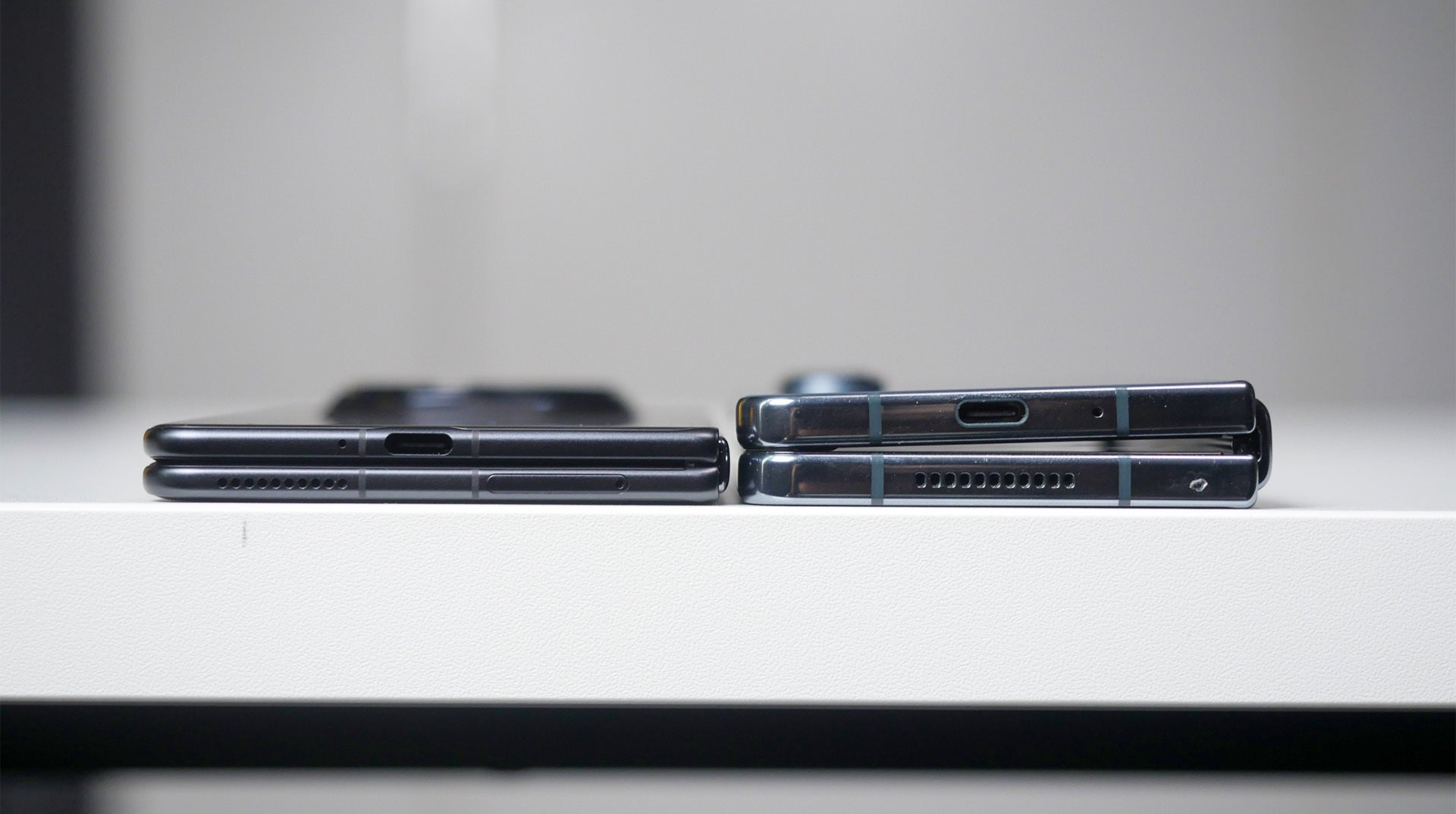Of course, this question makes perfect sense, but let me give you an analogy: when you plant a plant, and you don’t look after it, chances are it won’t survive for long. Plants need water and plants need care to survive.
That is exactly what I think happened with the Galaxy Z Fold. Samsung planted the world’s prettiest flower, but then stopped looking after it, until it withered. It almost killed that flower.
Enough with the analogies, let’s talk real world devices.
The problem

This tiny Cover screen on the Fold 6 (on the left) is the problem (Galaxy S24 Ultra is on the right for comparison)
Rather than listen to this very logical criticism, however, and making the required changes to its “plant” Samsung stubbornly sticks with almost the same form factor it had in the beginning.
No wonder the Galaxy Fold series isn’t meeting sales expectations!
Some surveys show that people are using the device folded 70% of the time, and that experience is severely compromised by a weird cover screen.
The complex business of foldable phones
Okay, but how can this mistake “kill” foldable phones?
Honestly, I wouldn’t have cared much about this if we were talking about a regular phone. Heck, Sony has been making the same mistake for years with the Xperia series. Weird 21:9 aspect ratio, inflated price, and the poor sales are not a surprise. No one else got hurt in the process.
But it’s different for foldable phones.
The problem is folding phones are still a “baby” category. They cost close to $2,000. They are expensive to purchase, expensive to manufacture, and building them is a risk for any company.
We were all expecting to see exponential growth in foldables, but in the last few years, growth has slowed down and sales are improving very slowly.
In this climate of limited demand, there is a real risk to making a foldable phone for any company and if customers only know the compromised form factor of the dominant player Samsung, they may get disappointed in the category as a whole.
Thank god for competition


Honor Magic V3 on the left vs Galaxy Fold 4 on the right (Image by PhoneArena)
I myself was close to completely writing off foldables as something that I just don’t need in my life. I have used every single Galaxy Fold since the original and I have quickly gone back to a regular phone after just a couple of weeks, relieved.
And if we only had Samsung and no other competition, it might have just all remained the same.
But thank god for competition. A robust and very competitive Chinese market has seen brands like Xiaomi, Huawei, Honor, Vivo and Oppo compete fiercely and push each other to greatness. This is what led to the current generation of foldable excellence:
- Honor Magic V3 – 9.3mm thickness when folded, a whopping 4.4mm thick when open, weight of just 230g
- Vivo X Fold 3 Pro – probably the best camera on a foldable, a sturdy hinge and an angled design that makes it easier to open
- OnePlus Open – innovative Canvas interface for multitasking that is just great
Compared to these sleek new devices, Samsung’s Galaxy Fold 6 looks… dated.
I have to credit it for some technical advancements, though: in my opinion, Samsung has the most sturdy hinge on the market right now, and the overall commitment from Samsung allows cheaper screen repairs in case something breaks. The device also has some limited water protection and is even protected from some particles (but not fine particles like dust).
However, Samsung just cannot keep going with this.
Samsung better start caring about its baby and watering its plant. It did not kill the whole foldable phone market, but it might just have slowed it down and risked its own success.
👇Follow more 👇
👉 bdphone.com
👉 ultraactivation.com
👉 trainingreferral.com
👉 shaplafood.com
👉 bangladeshi.help
👉 www.forexdhaka.com
👉 uncommunication.com
👉 ultra-sim.com
👉 forexdhaka.com
👉 ultrafxfund.com
